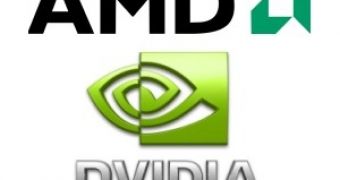As some of you will certainly remember, a few days ago, NVIDIA took a serious jab at its direct competitor in the GPU market, accusing it of tweaking drivers in order to obtain better benchmark results, and now, you'll be able to see what AMD has to say on this whole situation.
NVIDIA, with the backing of certain high-rated hardware sites, claimed that users had to push to “High” the Catalyst AI texture filtering setting for AMD 6000 series GPUs instead of the default “Quality” setting in order to provide image quality that comes close to NVIDIA’s default texture filtering setting.
Practically, NVIDIA claimed that the AMD Catalyst 10.10 drivers brought about a 10% performance advantage by lowering their default texture filtering quality in benchmarks, while reducing image quality in the process.
Those of you who've managed to go through our article on this topic will certainly remember that, at the time, we'd already contacted the company's reps in order to obtain an official answer to their competitors' very serious claims.
And sure enough, AMD was kind enough to provide us with an official comment, that we'll relay to you as follows: We are committed to the PC gaming community and take all feedback on image quality very seriously. To that end, we have recently revisited the current default image quality settings used in Catalyst drivers and found them to be on par with the default settings provided by our competitor. We take great care in determining the default settings of Catalyst drivers and believe current settings deliver a very good gaming experience. To ensure the best possible experience for our customers, AMD provides the industry’s most comprehensive set of controls, allowing users of AMD Radeon graphics to find their own perfect balance between image quality and performance. So, in other words, AMD sort of rebuffs NVIDIA's claims, without going into too many technical details (as compared to the green team, who was pretty on topic from this point of view).
Anyway, we'll just have to leave it as that for the time being, at least until we get a chance to see for for ourselves whether NVIDIA's claims are true or not, but until then, if you have encountered such problems with the Catalyst drivers, please, don't hesitate to relay it to us in the comments section.

 14 DAY TRIAL //
14 DAY TRIAL //